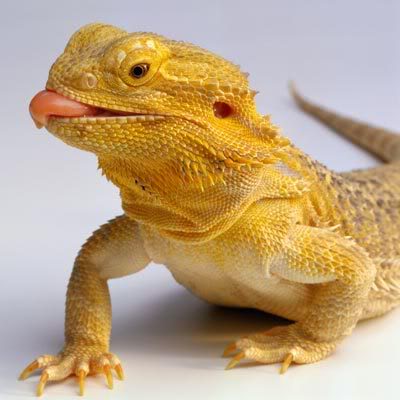Why Is My Bearded Dragon Turning Black and Not Moving? Common Causes and Solutions
Introduction
Bearded dragons are wonderful pets that are loved by many reptile enthusiasts. These lizards are great for beginners due to their docile nature. However, there may be times when you notice that your bearded dragon is turning black and not moving. This can be alarming, as a black appearance usually signifies that something is wrong with your pet. In this post, we will explore the common causes of a bearded dragon turning black and not moving, and the solutions to these issues.
Causes of Bearded Dragons Turning Black and Not Moving
1. Brumation
Brumation is similar to hibernation, where bearded dragons slow down and reduce their activity levels. During this period, bearded dragons may turn black and may not move as frequently. This natural behavior typically takes place during the winter months, where a decrease in temperature is observed. The lack of movement is due to the pet conserving energy levels. You need to ensure that your pet is comfortable during this period, such as providing enough heat and light. It is essential to maintain a humidity level of approximately 30-40% like the natural habitat of bearded dragons in Australia.

2. Lack of Heat
Bearded dragons require heat to regulate their body temperature. If the heating lamp or pad is not functioning correctly, the pet will become stressed and will not move around. Additionally, the temperature needs to be adequate for your bearded dragon and set according to their needs. For this reason, it is important to ensure that your pet’s enclosure has the correct heat settings. The enclosure should have a basking spot with a temperature ranging from 95-110°F and a cooler area around 75-80°F. A heat lamp or Ceramic Heat Emitter (CHE) is required to ensure that the temperature is regulated appropriately.
3. Stress
A bearded dragon may turn black and become inactive when they are under stress. This could be due to many reasons, such as changes in their environment or an unsuitable living condition. Bearded dragons that are stressed may also exhibit behaviors like loss of appetite or aggression. It is important to identify the source of stress and modify the environment accordingly. Ensure that there is adequate space and hiding places within the enclosure. If the stress is due to a change in the environment, it is advisable to give your pet adequate time to adjust.
Solutions for Bearded Dragons Turning Black and Not Moving
1. Check the Heat Source
As mentioned earlier, bearded dragons require heat to regulate their body temperature. Therefore, it is essential to check the heating source to ensure that everything is working correctly. You can invest in a digital thermometer to monitor the temperature accurately. If you notice any issues with the heating system, seek professional help immediately.
2. Give Them Space
If you think that your bearded dragon is stressed, provide plenty of space and hiding places within their enclosure. This will give them a sense of security, and they will become more comfortable. By creating a soothing environment, your pet may become more active and begin to show interest in their surroundings.

3. Visit the Vet
If you have tried everything without any success, it is advisable to visit an exotic veterinarian. A professional can examine your pet and identify any underlying health conditions that may be causing the issue. The vet may need to run tests such as bloodwork or x-rays to gain a better understanding of the issue. After the diagnosis, the vet will recommend the appropriate treatment plan.
Conclusion
In conclusion, a bearded dragon turning black and not moving can be concerning, but it’s essential to identify the underlying reason for this behavior. By understanding the causes and solutions, you can ensure that your pet is healthy and happy. Remember to always provide the right living conditions, monitor the temperature and ensure adequate lighting. By following these simple steps, you can provide your bearded dragon with the love and care they deserve.
